| Capturing the ghosts of my ancestors |

|

|

|
| Culture | |||||||||||||||||||||||||||||||||||||||||||||||||||||||||||||||||||||||||||||||||||||||||||||||||||||||||||||||||||||||||||
| Sunday, 13 December 2009 | |||||||||||||||||||||||||||||||||||||||||||||||||||||||||||||||||||||||||||||||||||||||||||||||||||||||||||||||||||||||||||
Portraits of the Afterlife: Clem So reconnects with his Chinese heritage, painting the ancestors he has never met.They say to write is to express, to paint is to release. If that is the case, then Clem So's work must surely be a powerful release of the anguished ghosts and demons that have plagued him throughout his life. So, born and raised in Liverpool in the 1960s, after his parents came over from China, depicts the ancestors he has never known in his latest collection of work Portraits of the Afterlife; tracing the intangible.'
Yet when I view the portraits, I find my breath quite taken away. For in their faces lie a stoicism, a sense of endurance, yet also pain and suffering. They capture such an anguish and I find myself overwhelmed by a deep sadness and longing. With names like Eternal Grandmother and Treasure Each Moment, it is clear that family relationships lie at the root of Portraits of the Afterlife. Even the multi-layered way they have been painted reflects So's personal philosophy of self; for Clem So's work is him, captured in all its different seams and layers. And not just him but his parents and grandparents before him, including those that he has never known but who knows - maybe one day in the afterlife he might. I look at his other portraits and am captivated particularly by Jade Mother and Frank - with their modern bright hues and gaudy colours. He tells me they are based on his own parents. The choice of the title Jade Mother is knowingly ironic. In Chinese culture Jade is a precious stone to be revered, but nonetheless it is a stone, emotionally detached, to be admired from afar. So's work focuses the unbreakable bonds of family ties whether you recognize that they are there or not. He likens his desire to reconnect with his heritage to chasing a rainbow but never catching it.' His work highlights to stark effect the cultural conundrum of what it is to be both British and Chinese and how sometimes a dual heritage can actually feel like a case of belonging to neither. Without solid family roots or ties it is easy to fall into an abyss and not know where you belong. For Clem So grew up as an angry teenager in a hostile land, feeling alienated from both his ethnic culture and the English culture he grew up in. Even now he leads an estranged life from his own parents, including his father whom he barely has a speaking relationship with. Yet in spite of this, or perhaps because of, So uses his work to reach out and communicate to his family, painting all the things he is unable to say. Clem So currently resides in Devon with his partner and four children. Tell me about the background to Portraits of the Afterlife; how did it come about? This desire to connect with my ancestral past feels intangible but it is there nevertheless and I want to convey that. I'm inspired by the journey of investigating my past and history. I want to connect with my Chinese-ness and record realistically how that feels. Whilst I don't have a visual reference for my grandparents and great grand parents they all exist in me somewhere. So I'm painting partly for them and they are painting partly through me. In some ways it feels like a journey that will never end. It's like chasing a rainbow but never catching it. What was it like growing up in a white 1970s England?
We lived on the outskirts of Liverpool. Liverpool was a massive port for the Chinese, as it was a major shipping route. There was a substantial number of Chinese in the area and we were quite a close-knit family. I'm the youngest of four children and I owe my destiny to my parent's decision to come to England. If they had stayed in China I would never have been born due to the one-child rule. My earliest memory was when I was four -my sister said I used to sit at the back of the family chip shop and draw on the chip shop paper. On identity, alienation and dealing with the frustration I had a lot of anger management issues about being Chinese. I didn't feel I could invite my English friends back to my house or even have an English girlfriend. All these issues built up inside. It wasn't until I went on a workshop run by Chinese actor David Yip that I realised I wasn't alone. There were lots of people out there like me going through the same thing, experiencing similar things as to what it was to be a British Born Chinese. David was a great motivating force in the Chinese community and he encouraged us to write about our backgrounds. I moved to Devon when I was thirty and have lived here for eighteen years. A lot of suppressed emotions have since come out. I'm no longer the angry person I was, but instead I'm trying to embrace who I am and everything I've done is who I am now. On his family estrangements, relationships and destiny.
How do you create your portraits? I start off using Chinese brush and ink, the marks these brushes make are unmistakable thanks to their eastern feel and the tone of the ink is much richer. I then take a photograph of the inked portrait and import it into Photoshop. I am dealing with the notion of the intangible, so the transparent layers that I paint with in Photoshop work well to produce that other worldly feel. Photos of Cantonese food are used quite bit in my portraits to colour and texture the work, this is because of my fondness for Dim Sum (Roast Duck, Siu Mai and Nor Mai Gai are my favourites) and also because food is one of the only real memories that I can truly identify with being Chinese, as our family outings to Chinatown put me in touch with the Chinese community . In the paintings I see much anguish and pain, particularly in Treasure Each Moment. On her face it is as if suffering and endurance has been etched into every line, was this deliberate? This anguish and pain you are picking up on is my own desire to reconnect with my Chinese identity and culture. Maybe there is still somethi How have your family responded to your work? I haven't shown them yet but they are aware of my work. I would like take my work to the Manchester Chinese Arts Centre and show it to them there, but I'm not sure what their response would be. Who inspires you? I like interesting textures. Im inspired by artists like Alberto Giacometti, how he moves his paints around. I also like Jenny Savile - a British artist who creates 9ft paintings that are so immense in how they convey form and flesh. What do you think of the current Chinese art scene? I can't connect with the current crop of Chinese artists emerging on the scene. I don't have any kind of relationship with Chairman Mao - it's like a different world to the one I grew up in. I do like the work of Zhuan Hun (known for his massive Buddhas and ash sculptures). He deals with identity - of how China has lost its identity and is trying to forge a new identity as the old China is too painful to accept. They're definitely trying to incorporate a more western, global view. I think it's inevitable as more Chinese artists come out of mainland China. Have you made the journey back to your roots? I have never been to China or Hong Kong. I have lived all my life here in the UK. Who knows maybe I will go there one day and feel a real sense of belonging. I think I would like to learn Cantonese as well.
A journey that will never end There is something about Clem So that reminds me of a calm flowing river with a dangerously deep undercurrent running through it. When I call him for the interview, I do not know quite what to expect. But when he speaks he is quiet, softly spoken and incredibly articulate. There is something in the way he talks that makes me realise I am speaking to a man who has come through the fire and done much to curb his own demons. Even if they are demons that will never truly go away. Our interview overruns its allocated slot and I am left fascinated by a man whose work I feel is one of the few that truly captures the essence of the Chinese diaspora - what it is to be second generation Asian born and bred in the west. His portraits tap into those feelings of displacement - of never quite belonging and reflect to a greater extent the identity issues that affect the majority of the overseas-born Asian community His circumstance is not so dissimilar to mine and indeed a great many other second generation Chinese whose families have crossed the globe in order to make a fresh start. Cut off from our heritage are we truly lost or rootless? If we do not know where or who we came from can we ever truly know who we are? Or like most people, regardless of background, are we simply finding our way, day by day. Perhaps it is as So states - a journey that will never end. In a way he is right. Regardless that I may never have known my ancestors, I know that they live on in me, and it is their blood and spirit that courses through my body as well as mine. Interview by Suzie Wong PURCHASE PRINTS SIGNED BY THE ARTIST
|
|||||||||||||||||||||||||||||||||||||||||||||||||||||||||||||||||||||||||||||||||||||||||||||||||||||||||||||||||||||||||||






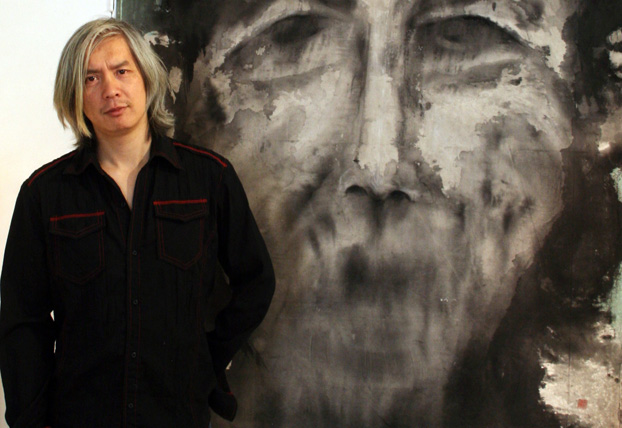 It is a powerful and moving collection, and has been met with considerable acclaim after its showcase in Totnes, Devon, reducing some of the audience to tears. But to depict the ancestors you have never known must be almost an ephemeral task - for how indeed do you trace the intangible? How do you capture the essence of someone you have never met?
It is a powerful and moving collection, and has been met with considerable acclaim after its showcase in Totnes, Devon, reducing some of the audience to tears. But to depict the ancestors you have never known must be almost an ephemeral task - for how indeed do you trace the intangible? How do you capture the essence of someone you have never met?
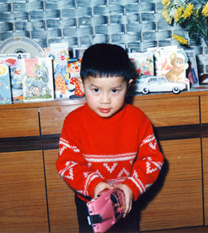 I didn't think it was a huge problem but I always felt like we weren't on the same level as everyone else. I never felt quite right. The racism for a start - little responses like Bruce Lee noises - you laughed but inside it was quite painful. You try to brush it aside.
I didn't think it was a huge problem but I always felt like we weren't on the same level as everyone else. I never felt quite right. The racism for a start - little responses like Bruce Lee noises - you laughed but inside it was quite painful. You try to brush it aside.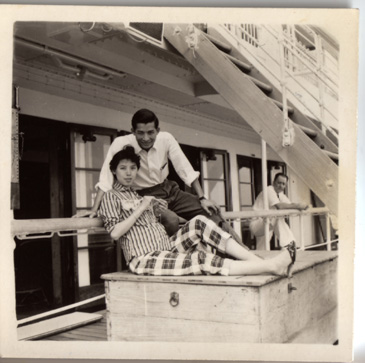 I'm not really close to my parents but doing this has given me a good opportunity to talk to my father. The P & O Corfu was the name of the ship we were on - I found several photos of the ship we came in and I've used it in one of my illustrations. That journey they made was pivotal in my destiny.
I'm not really close to my parents but doing this has given me a good opportunity to talk to my father. The P & O Corfu was the name of the ship we were on - I found several photos of the ship we came in and I've used it in one of my illustrations. That journey they made was pivotal in my destiny.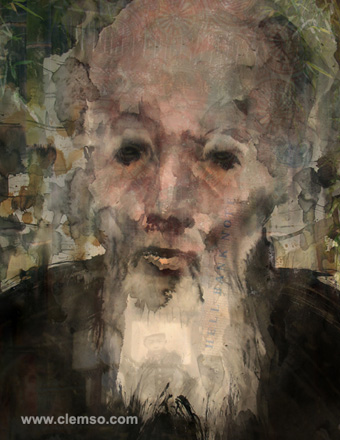 ng in me I am trying to resolve. It is not necessarily them that is suffering, as it's me who is painting and doing the work. Maybe that anguish you're picking up is something that is coming out through me. For in my work and my life I believe in a multi-layering of connection. I practise Buddhism, and I do believe in cause and effect. I believe there is a profound connection between me, my family, and the world, how I respond and how the world responds in turn.
ng in me I am trying to resolve. It is not necessarily them that is suffering, as it's me who is painting and doing the work. Maybe that anguish you're picking up is something that is coming out through me. For in my work and my life I believe in a multi-layering of connection. I practise Buddhism, and I do believe in cause and effect. I believe there is a profound connection between me, my family, and the world, how I respond and how the world responds in turn.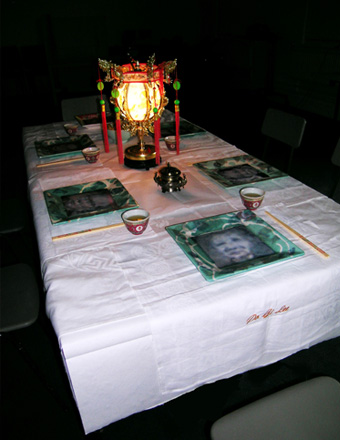 I do feel English but I still respect and recognize my Chinese heritage. In a way I do feel like a banana' but I don't have a huge hang-up about it. I recognize I have a rich heritage I want to embrace. This investigation of my own cultural identity feels infinite but it is the joy of the journey that is helping me get there.
I do feel English but I still respect and recognize my Chinese heritage. In a way I do feel like a banana' but I don't have a huge hang-up about it. I recognize I have a rich heritage I want to embrace. This investigation of my own cultural identity feels infinite but it is the joy of the journey that is helping me get there.
